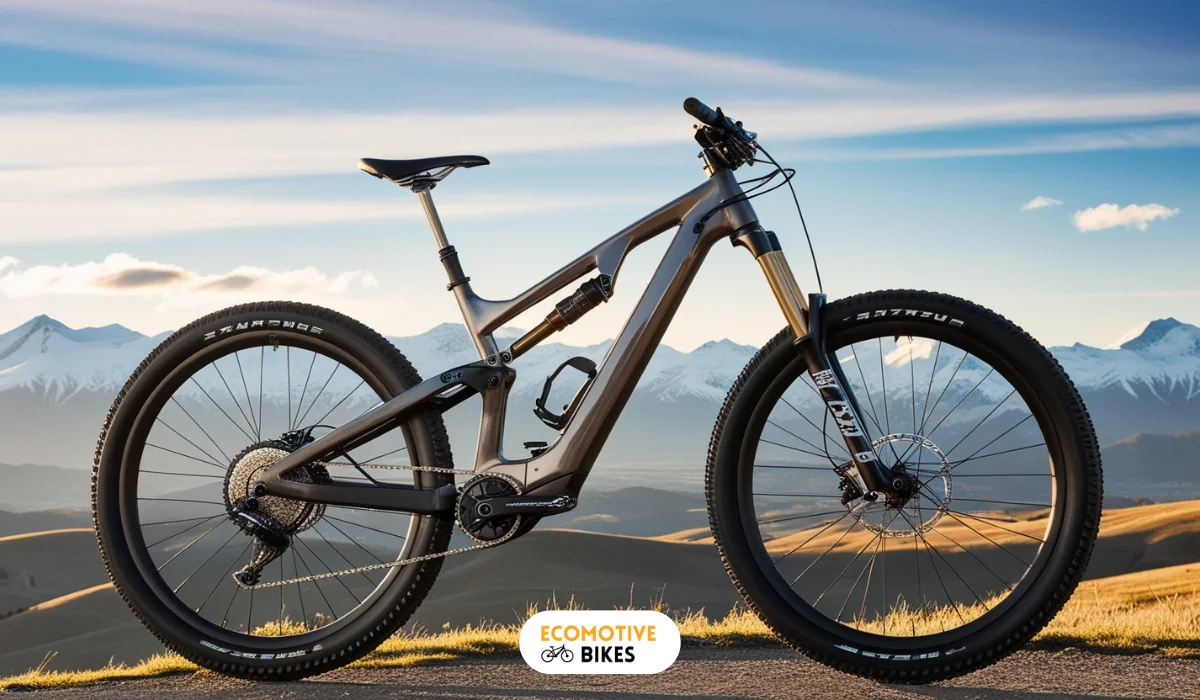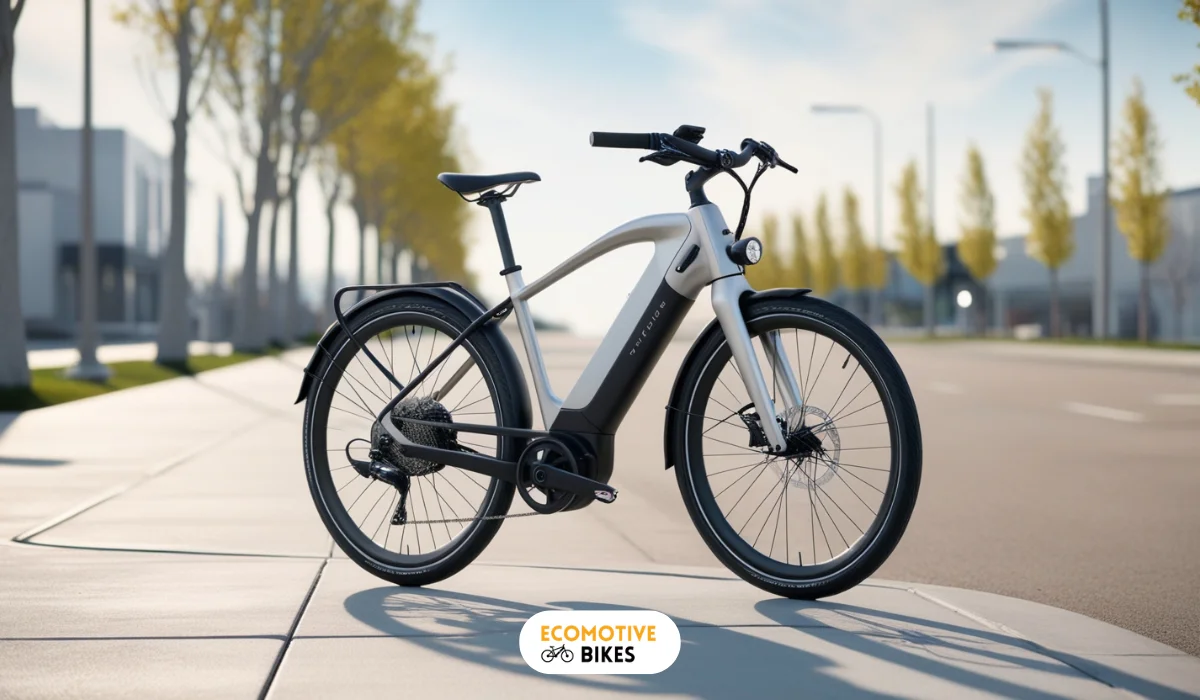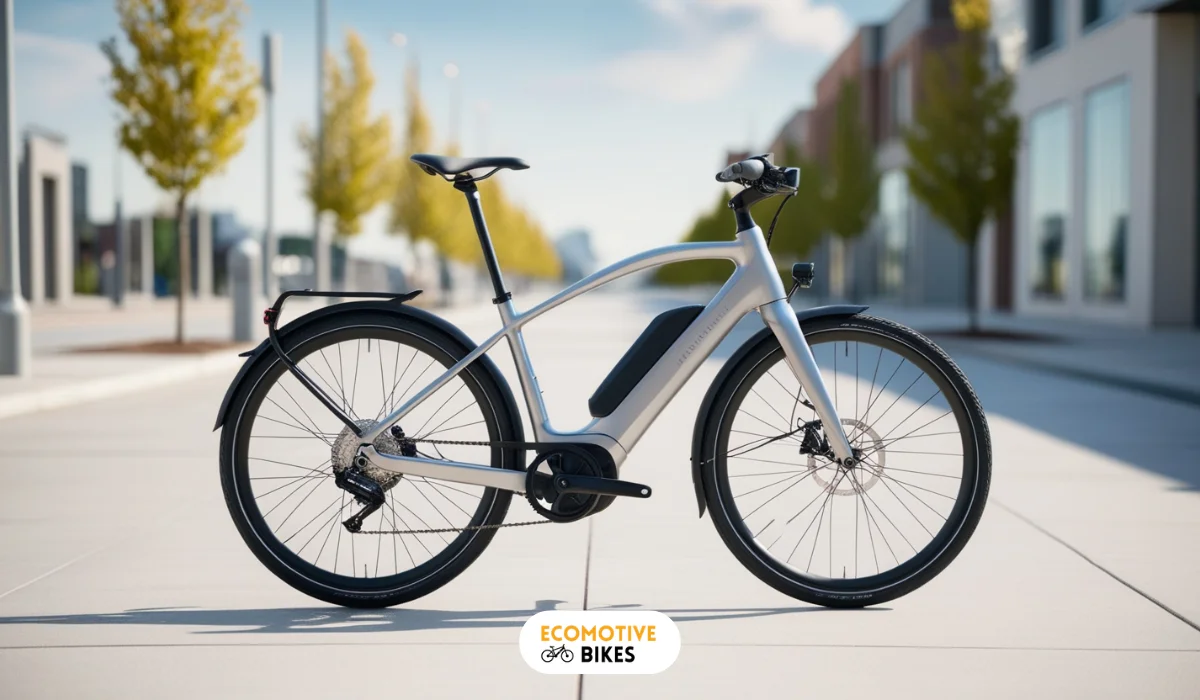Hub drive motor vs Mid drive motor: Which is best for you?
Hub drive motor vs mid drive motor for e-bikes: we compared ride quality, efficiency, maintenance, and performance to help you choose the right motor.
Table of Contents
Related Articles:
Choosing the right motor for your electric bike is a key decision that affects performance, power delivery, and how the bike handles. The two most common motor types found in e-bikes are hub drive motors and mid-drive motors. Each type offers different advantages and challenges, making it essential to understand their differences before deciding which is right for you.
In this guide, we’ll explore hub drive motor vs mid drive motor, highlighting their unique features, pros, and cons to help you find the best match for your riding style and preferences.

Related: Lifespan of electric bike motors
What is a hub drive motor?
An e-bike hub drive motor is a common and efficient option for powering electric bicycles, and it can be installed in either the front or rear wheel hub. These motors come in two main types: front hub motors, which pull the bike forward, and rear hub motors, which push from the back.
The mechanics behind hub motors are straightforward. The motor is integrated directly into the wheel hub, where it delivers power independently of the bike’s chain or gearing system. This design makes it a relatively simple solution for electric propulsion, but understanding how it performs in different conditions can help you decide whether a hub motor is the right choice for your e-bike.
Here are the two types of Hub Motors:
- Direct-drive hub motors: Direct-drive hub motors operate without any internal gears. In this design, the hub itself acts as the motor, where one section houses magnets and the other holds wires that carry power from the battery. When electric current flows, the magnets are energized, which sets the hub in motion.
- Geared hub motors: Geared hub motors feature an electric motor that spins at a high speed, connected to a set of planetary gears. These gears reduce the motor’s speed while increasing torque, allowing the hub to spin at a lower speed. While geared hub motors are generally smaller in diameter than their direct-drive counterparts, the planetary gear system often makes them wider overall.
What are the advantages of hub drive motors?
Hub drive motors are a popular choice for many e-bikes due to their simplicity and affordability. They are located in the wheel hub, either in the front or rear, which makes them easy to install and maintain.
These motors operate independently of the bike’s gears, offering a smooth, low-maintenance experience, and they tend to be more budget-friendly than mid-drive motors. Their placement also means they don’t affect the bike’s overall balance much, making them suitable for flat or moderately hilly terrain.
Here is a list of hub drive motor advantages:
- Affordability: Hub motors are generally more cost-effective than mid-drive systems, making them a popular choice for budget-conscious riders.
- Low maintenance: Due to their design, these motors require little maintenance, as they operate independently from the bike’s drivetrain, reducing wear and tear on gears and chains.
- Weight distribution: Hub motors are housed inside the wheel hub, so they add minimal additional weight and don’t interfere with the bike’s center of gravity.
- Versatile installation: Riders can choose between front or rear hub motor configurations, depending on their preferences for handling and power delivery.
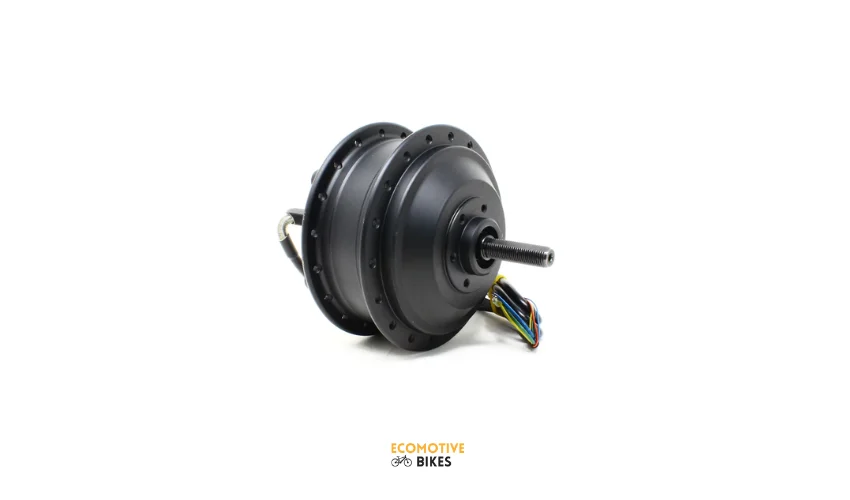
What are the drawbacks of hub drive motors?
While hub drive motors are convenient, they do have some limitations. They don’t integrate with the bike’s gears, which can lead to reduced efficiency on steep climbs or when trying to achieve higher speeds.
Hub motors also generally produce less torque compared to mid-drive systems, meaning they may struggle on difficult terrain or steep inclines. In addition, front hub motors, in particular, can cause wheel slip in wet or slippery conditions, which can affect the stability and control of the bike.
Here is a list of disadvantages that a hub drive motor user may face:
- Less natural ride feel: Since hub motors don’t engage with the bike’s gearing, they can feel less responsive and natural than mid-drive motors, especially when accelerating or climbing hills.
- Lower torque: Hub motors typically offer less torque compared to mid-drive motors, which may be noticeable when tackling steep inclines or when quick acceleration is needed.
- Wheel slip: Front hub motors can sometimes cause the front wheel to slip on wet or uneven terrain, as all the power is delivered directly to the wheel rather than through the bike’s drivetrain.
- Limited gear integration: Because hub motors operate independently from the bike’s gears, they may not perform as efficiently on varied terrain, particularly during uphill rides or when higher torque is required.
Hub motors are a reliable and practical choice for riders looking for a straightforward and low-maintenance e-bike, but their limitations in torque and gear integration should be considered, especially if your rides involve challenging terrain or steep hills.
What is a mid-drive motor for an electric bike?
An e-bike mid-drive motor offers a more integrated and dynamic approach to electric bike propulsion compared to hub motors. Positioned at the center of the bike, near the pedals, the mid-drive motor powers the bike by driving the chain and working directly with the bike’s gear system.
This central placement is a key advantage, as it allows the motor to take full advantage of the bike’s gears, leading to improved performance, especially on challenging terrain. The result is a more responsive ride with better torque, power transfer, and balance, making mid-drive motors ideal for those seeking an enhanced riding experience.
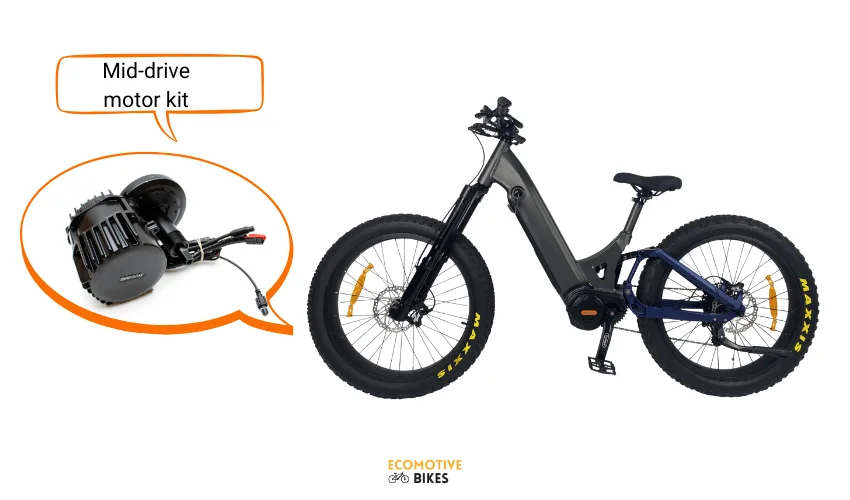
What are the advantages of mid-drive motors?
Mid-drive motors are favored for their efficiency and superior torque. Located near the bike’s pedals, they drive the chain and work seamlessly with the bike’s gears, making them excellent for tackling steep hills and tough terrain. The central placement of the motor provides balanced weight distribution, enhancing the bike’s handling and delivering a more natural riding feel.
Here is a list of mid-drive motors advantages:
- Balanced weight distribution: Positioned at the center of the bike, mid-drive motors help maintain a balanced weight, improving handling and giving a more stable ride, especially on uneven surfaces.
- Higher torque: Mid-drive motors typically deliver greater torque compared to hub motors, allowing for more efficient climbing of steep hills and rougher terrain.
- Efficient power usage: These motors work directly with the bike’s gear system, meaning they can adjust to different conditions more effectively, making rides smoother and more energy-efficient.
- Natural ride feel: The mid-drive system provides a more natural cycling experience, as the power output is synchronized with the bike’s pedaling, giving riders better control and responsiveness.
What are the drawbacks of mid-drive motors?
Mid-drive motors tend to be more expensive and complex than hub motors. Their added mechanical components can require more maintenance, and the system itself is typically heavier, which can affect the bike’s portability. Additionally, fewer models are available in the market compared to hub-driven systems.
Here is a list of disadvantages a mid-drive motor use may face:
- Higher cost: Mid-drive motors are generally more expensive than hub motors, which can be a barrier for riders on a budget.
- Added weight: While positioned centrally, the additional weight of the mid-drive system and its components can affect the overall portability of the bike.
- More maintenance: With more moving parts, mid-drive motors may require more maintenance over time, particularly as they are more integrated with the bike’s drivetrain.
- Fewer market options: While mid-drive motors are becoming more popular, they are still less common than hub motors, which may limit the variety of available choices in certain price ranges.
Mid-drive motors are an excellent choice for those prioritizing performance, torque, and a more natural riding experience, particularly for hilly or off-road routes. However, they may not be as budget-friendly or low-maintenance as hub motors, making it important to weigh your riding needs when deciding between the two systems.
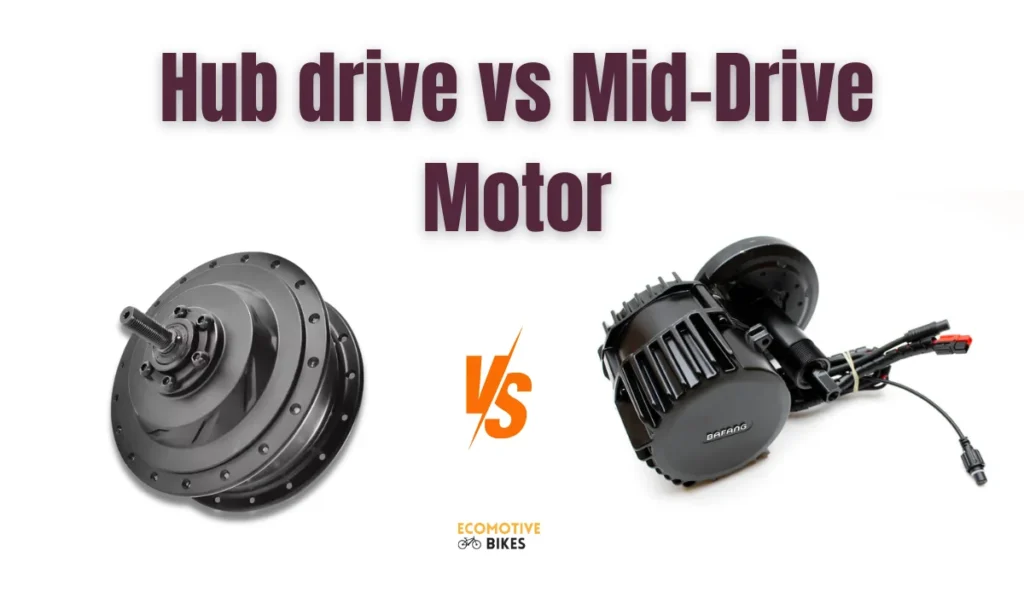
Hub vs. Mid-Drive Motors (A closer look beyond the basics)
When evaluating electric bike motors, it’s worth digging deeper than the usual pros and cons. The real difference lies in the specific details that shape your overall riding experience. To help streamline your decision-making, we’ve put together a detailed comparison table that outlines the key distinctions between hub and mid-drive motors.
Here is a table showing a comparison between Hub Motors and Mid-Drive motors:
| Feature | Hub Motors | Mid-Drive Motors |
|---|---|---|
| Ride Quality | Smooth on flat terrain, less natural on hills | Natural feel, excels on hilly terrain |
| Range | Adequate for city and leisure rides | Longer range, especially on tougher terrains |
| Gears | Independent, less seamless shifting | Integrated, smoother transitions between gears |
| Handling | Rear-heavy, might affect balance | Balanced, agile, responsive |
| Motor Size & Weight | Compact and lightweight | Larger and heavier |
| Reliability | Simple, requires minimal maintenance | Slightly more complex, requires periodic maintenance |
| Regenerative Braking | Common | Less common, availability varies |
| Throttle Control | Often available | Typically available |
| Maintenance | Low-maintenance | Requires a bit more upkeep |
| Pricing | Budget-friendly | Higher price, but offers better performance |
Now that we have seen the table of comparison, let us discuss them in detail:
How does ride quality compare between hub drive and mid-drive motors?
Hub drive motors offer a smooth and comfortable ride, especially on flat surfaces, making them a good option for casual riders. However, since they don’t interact with the bike’s gears, the power delivery can feel less natural, particularly when climbing hills. This can result in a less engaging riding experience compared to mid-drive motors.
Mid-drive motors, on the other hand, provide a more natural cycling feel because they work with the bike’s gears. This allows riders to easily tackle hills and uneven terrain. For those who want an electric bike that feels more like a traditional bike, mid-drive motors are a top choice.
Which motor offers better range: hub drive or mid-drive?
For many e-bike users, the range—or how far the bike can travel on one charge—is a key factor. The type of motor you choose can impact how efficiently the bike uses its battery.
Hub motors are great for flat, city rides and are known for being simple and efficient. They offer a sufficient range for daily commuting and casual rides.
Mid-drive motors are better for more challenging routes with hills. By using the bike’s gears, they optimize power, making the battery last longer. If you frequently ride on uneven or hilly terrain, mid-drive motors will give you a better range.
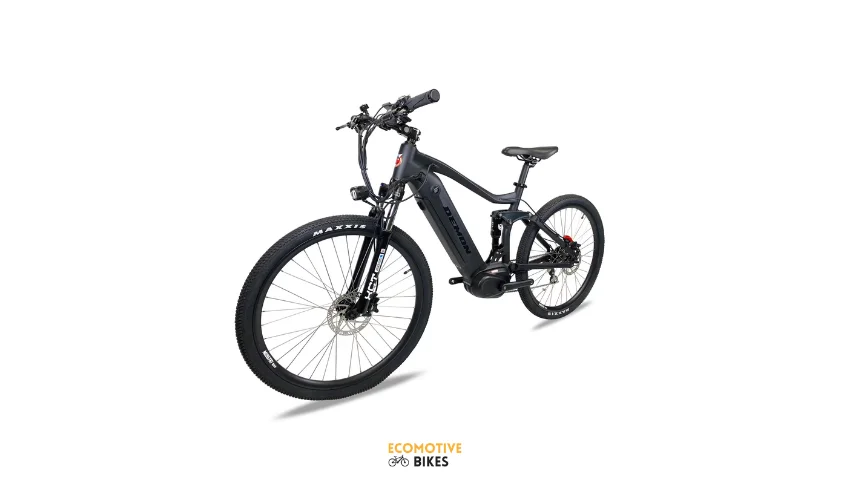
How do gears function differently in hub drive and mid-drive motors?
The way a motor works with the bike’s gears can greatly affect your riding experience.
Hub motors run independently of the bike’s gears, which makes installation easier but can result in less smooth gear changes. You may notice a slight delay in power when shifting.
Mid-drive motors integrate with the bike’s gears, making power delivery smoother and more responsive. This gives riders better control, especially on variable terrain, as they can shift gears just like on a regular bike.
How is weight distribution managed in hub drive vs. mid-drive motors?
With hub motors positioned in the wheel hub, the weight distribution can be uneven, often making the rear of the bike heavier. This may impact the bike’s stability, especially during sharp turns or when lifting the front wheel.
Mid-drive motors, located near the bike’s center, provide better weight balance. This improves overall handling and makes the bike more agile and easier to control, similar to a traditional bicycle.
Motor size and weight: hub drive vs. mid-drive — what’s the difference?
Hub motors are compact and lightweight, blending well with the bike’s frame. Their smaller size makes the bike easier to store and transport, without sacrificing too much on performance.
Mid-drive motors are larger and heavier, but their central positioning contributes to better balance and improved handling. While they may be more visible, the weight distribution helps create a smoother and more controlled ride.
Which motor type is more reliable: hub drive or mid-drive?
Hub drive motors are known for their simplicity and durability. Since they have fewer moving parts and are often enclosed to protect against external factors like dirt and moisture, they tend to be less prone to wear and tear. This means that hub motors typically require very little maintenance, making them an excellent choice for riders who want a low-maintenance, hassle-free experience.
Mid-drive motors, while also durable, are more mechanically complex because they work directly with the bike’s drivetrain. This added complexity means they may need more attention in terms of service and upkeep. However, with regular care, such as lubricating the chain and checking gear alignment, mid-drive motors can be highly reliable for the long haul.
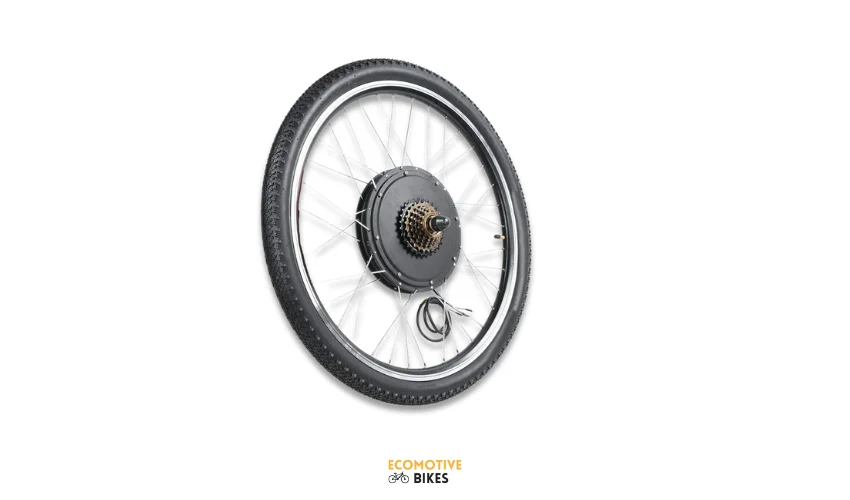
Does regenerative braking work equally for hub drive and mid-drive motors?
Regenerative braking is a feature that allows your bike to recapture energy when braking or going downhill, potentially extending your battery’s life.
Many hub motors include this feature. When the brakes are applied, or the bike is descending, the motor converts kinetic energy (from the bike’s movement) back into electrical energy, which is stored in the battery. This can slightly improve range and efficiency, making hub motors more attractive for energy-conscious riders.
In contrast, regenerative braking is less common in mid-drive motors. Because mid-drive systems work closely with the bike’s drivetrain, incorporating regenerative braking adds complexity. Some newer mid-drive models may offer it, but it’s generally not a standard feature. If this is important to you, it’s worth checking specific mid-drive systems for this capability.
Which motor type has better throttle control, mid-drive or hub drive?
Throttle control allows riders to control how much assistance they get from the motor without needing to pedal harder.
Most hub motors come with throttle control, which lets you easily adjust the motor’s power. This is particularly useful if you need a quick burst of speed or want to make riding easier without adjusting gears. It adds convenience for city commuting or when you need quick changes in assistance, such as navigating traffic.
Mid-drive motors also often feature throttle control, allowing you to fine-tune the level of electric assistance. This can be especially handy on varied terrains, where you might need to quickly change how much help you’re getting from the motor. Being able to adjust the power on the go makes the ride more flexible and responsive to changing conditions.
Is regenerative braking equally effective on both hub drive and mid-drive motors?
Regenerative braking is a feature that allows your bike to recapture energy when braking or going downhill, potentially extending your battery’s life.
Many hub motors include this feature. When the brakes are applied, or the bike is descending, the motor converts kinetic energy (from the bike’s movement) back into electrical energy, which is stored in the battery. This can slightly improve range and efficiency, making hub motors more attractive for energy-conscious riders.
In contrast, regenerative braking is less common in mid-drive motors. Because mid-drive systems work closely with the bike’s drivetrain, incorporating regenerative braking adds complexity. Some newer mid-drive models may offer it, but it’s generally not a standard feature. If this is important to you, it’s worth checking specific mid-drive systems for this capability.
Which motor offers superior throttle control: hub drive or mid-drive?
Throttle control allows riders to control how much assistance they get from the motor without needing to pedal harder.
Most hub motors come with throttle control, which lets you easily adjust the motor’s power. This is particularly useful if you need a quick burst of speed or want to make riding easier without adjusting gears. It adds convenience for city commuting or when you need quick changes in assistance, such as navigating traffic.
Mid-drive motors also often feature throttle control, allowing you to fine-tune the level of electric assistance. This can be especially handy on varied terrains, where you might need to quickly change how much help you’re getting from the motor. Being able to adjust the power on the go makes the ride more flexible and responsive to changing conditions.
Which motor type requires less maintenance: hub drive or mid-drive?
One of the big advantages of hub motors is their low maintenance requirements. Since they have fewer moving parts and are often sealed from the elements, they are less likely to suffer from wear and tear. Routine maintenance mostly involves simple tasks like checking tire pressure, ensuring electrical connections are intact and keeping the battery in good shape.
Mid-drive motors, due to their integration with the drivetrain, require a bit more attention. You’ll need to occasionally check and maintain parts like the chain, derailleur, and other drivetrain components. Regularly lubricating the chain and ensuring the gears shift smoothly are key to keeping a mid-drive motor running efficiently.
Which motor is more budget-friendly: hub drive or mid-drive?
Cost is often a deciding factor for many electric bike shoppers, and the type of motor you choose will impact the price of the bike.
Hub motor e-bikes tend to be more affordable. Their simpler design and fewer moving parts make them a budget-friendly option, which appeals to riders looking for a cost-effective way to experience electric biking. Hub motors are a great entry point for those who want an economical option for commuting or casual riding.
Mid-drive motor e-bikes are typically more expensive. The added cost comes from the advanced technology, complexity, and superior performance that mid-drive systems offer. While they are pricier, mid-drive motors deliver better torque, more efficient power use, and enhanced climbing ability, making them a worthwhile investment for riders who want higher performance or plan to tackle more challenging routes.
Wrapping up: Hub drive motor vs mid drive motor for e-bikes
The choice between hub and mid-drive motors comes down to your personal riding style and needs.
- Hub motors shine for their affordability, easy maintenance, and quick speed, making them ideal for flat city commutes or leisurely rides.
- Mid-drive motors, on the other hand, offer superior torque, a more natural cycling feel, and excellent performance on hills or rough terrain. They are perfect for riders who need more power for climbing or carrying heavier loads.
In the end, whether you go for a hub motor or a mid-drive motor depends on what kind of riding experience you’re looking for—affordable and simple, or powerful and dynamic. Do not miss our electric bike motors section for more interesting pieces of information.

